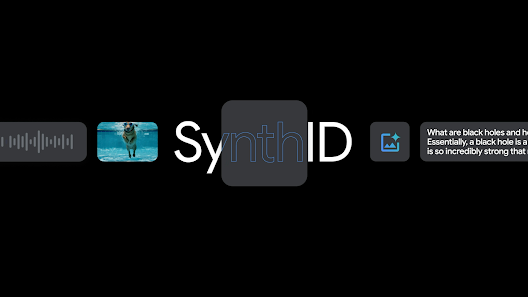As generative AI continues to evolve, so does the need for transparent content verification. Google is rising to the challenge with the release of its SynthID Detector — a centralized platform designed to identify AI-generated media.
What is the SynthID Detector?
The SynthID Detector is a new verification tool developed by Google DeepMind to help users determine whether content — including images, audio, video, and text — was generated using Google’s AI systems. The portal scans files for a hidden SynthID watermark, an imperceptible marker embedded into the digital content during its creation process.
This tool represents Google’s latest step toward promoting transparency in the AI ecosystem, especially as generative content becomes increasingly difficult to distinguish from human-created material.
How It Works
The SynthID Detector is designed with simplicity and accessibility in mind. Here’s a breakdown of how users can interact with it:
- Upload Content: Users upload media such as images, audio, video, or text that may have been generated using Google’s AI tools.
- Scan for Watermarks: The system analyzes the file for embedded SynthID watermarks. These watermarks remain intact even after modifications like cropping or compression.
- View Detection Results: If a watermark is found, the tool highlights which parts of the content contain the mark, offering clarity and insight into the origin of the piece.
Whether it’s pinpointing specific audio segments or identifying marked zones in an image, SynthID gives users a clear view of AI involvement.
Expanding Beyond Images
Initially developed for AI-generated images, SynthID has now broadened its scope. The watermarking system has been integrated into various types of media produced by Google’s advanced models like Gemini, Imagen, Lyria, and Veo. In fact, more than 10 billion pieces of content have already been tagged using this technology.
This cross-modal expansion serves as a foundation for verifying AI-generated content across the web, regardless of how it has been distributed or altered.
Empowering Developers and Partners
To foster a more trustworthy AI environment, Google has open-sourced the SynthID watermarking technology for text. This allows developers to incorporate the tool into their own models and platforms, promoting industry-wide adoption.
In addition, Google is actively forming partnerships to extend SynthID’s reach. Notably, NVIDIA has joined forces with Google to embed SynthID into video content generated through their Cosmos™ AI microservices. Furthermore, Google announced a collaboration with GetReal Security, a leading content verification provider, to ensure third parties can also detect SynthID watermarks.
Who Can Access SynthID Detector?
The tool is currently rolling out to select early users, with priority access given to journalists, researchers, and media professionals. Those interested in testing the portal can sign up via the official waitlist here.
Shaping the Future of Content Transparency
As AI-generated media becomes more prevalent across social platforms, websites, and news outlets, tools like SynthID Detector are crucial to helping users understand what they’re engaging with. Google’s commitment to transparency is evident through its open-source initiatives and industry partnerships.
For a deeper dive into how Google is leveraging generative AI tools to empower creators and enhance media workflows, check out our post on unlocking limitless creativity with Google’s AI media tools.
By continuing to innovate in watermarking and verification technology, Google is leading the charge in building trust and accountability in the AI-driven digital landscape.







